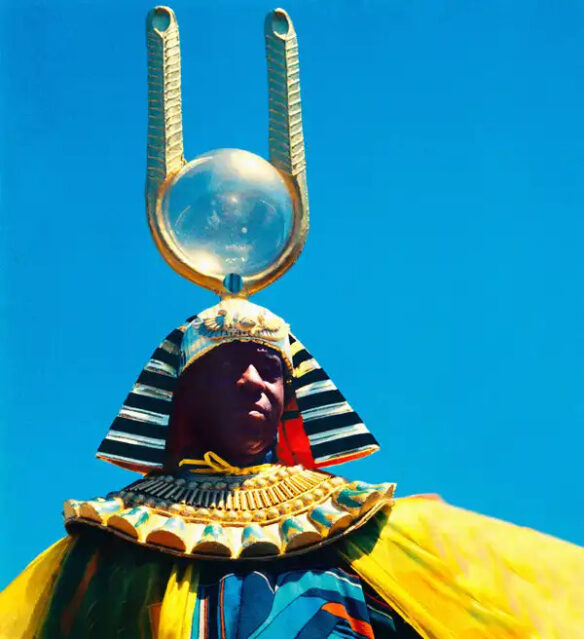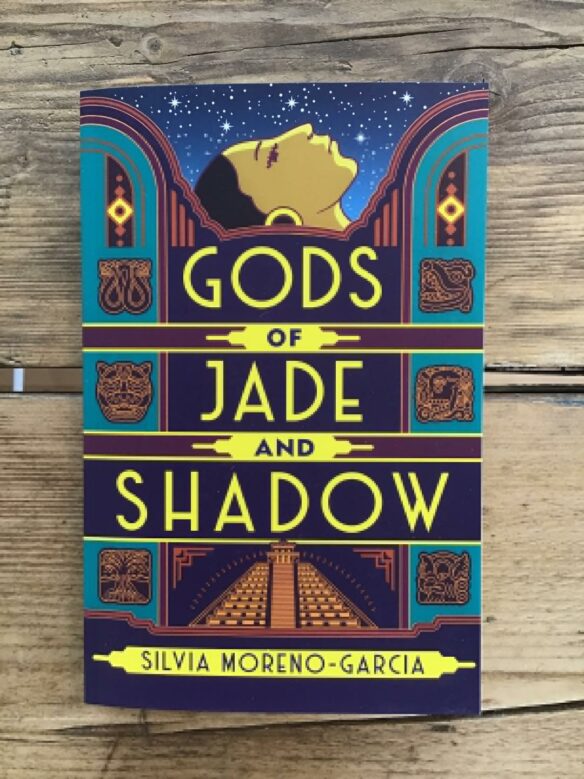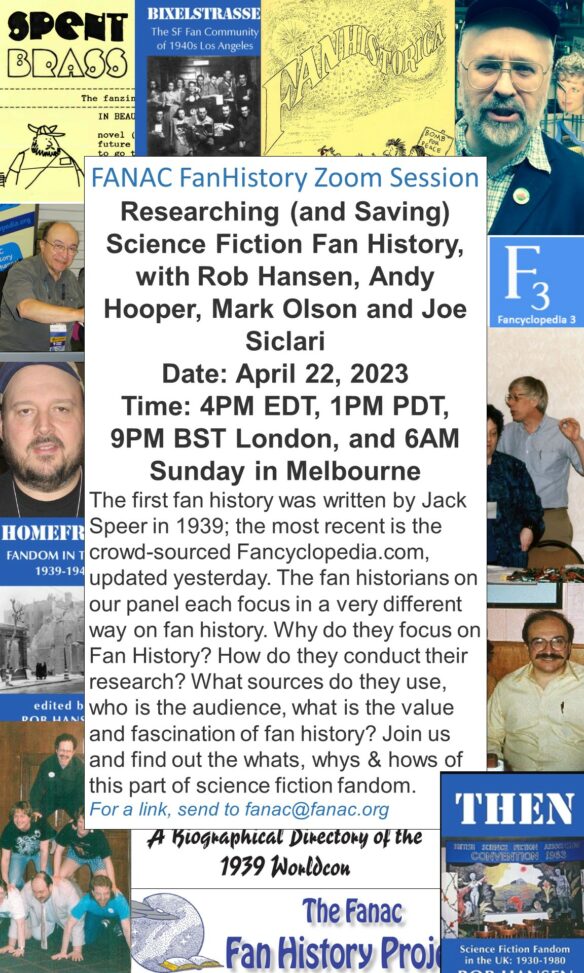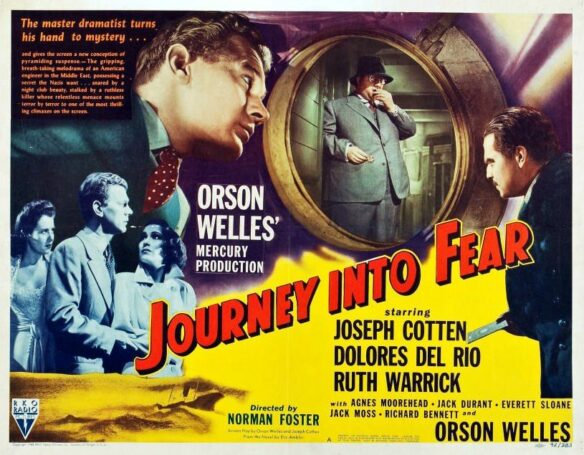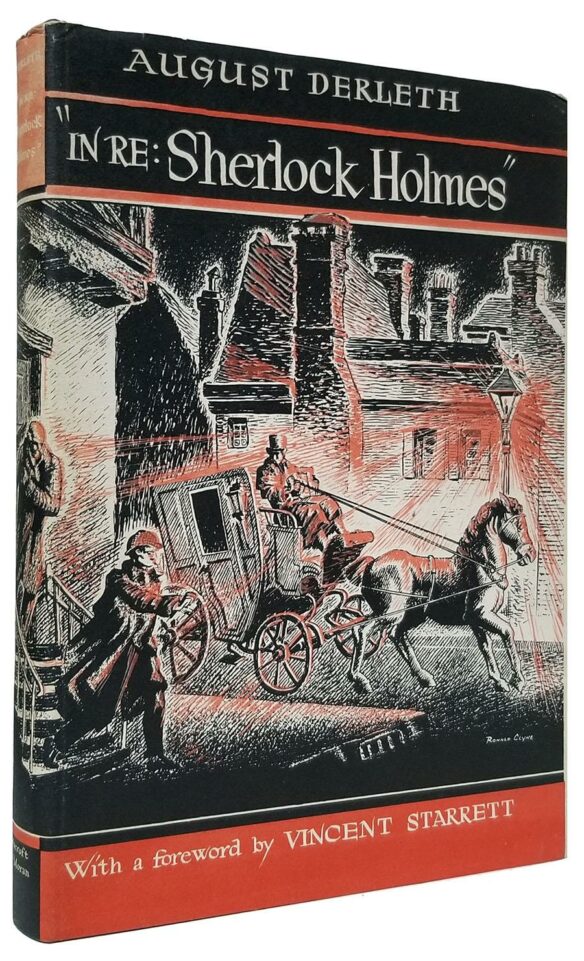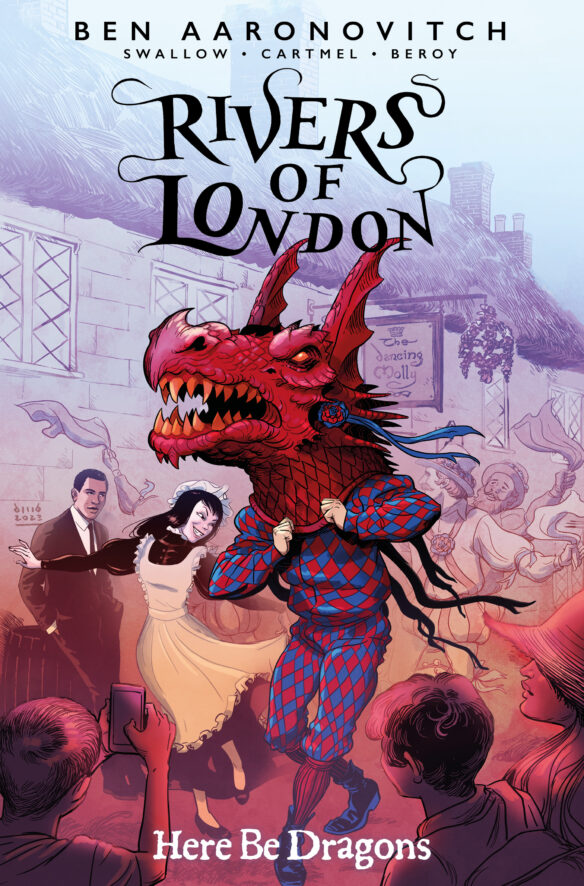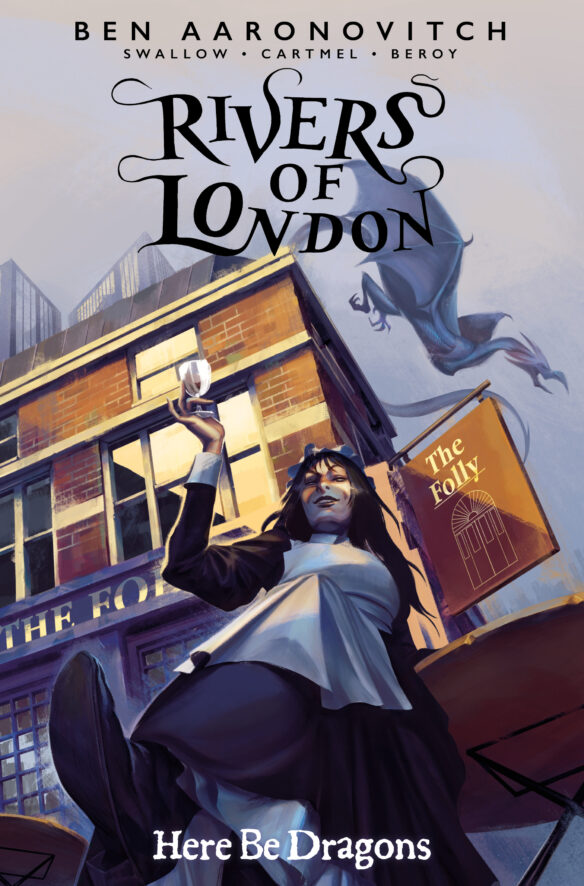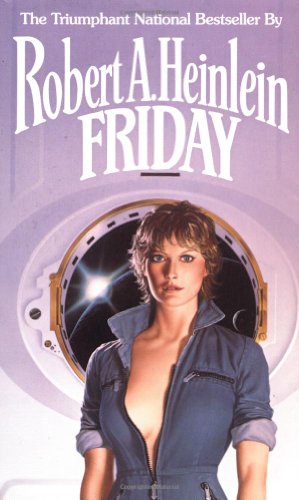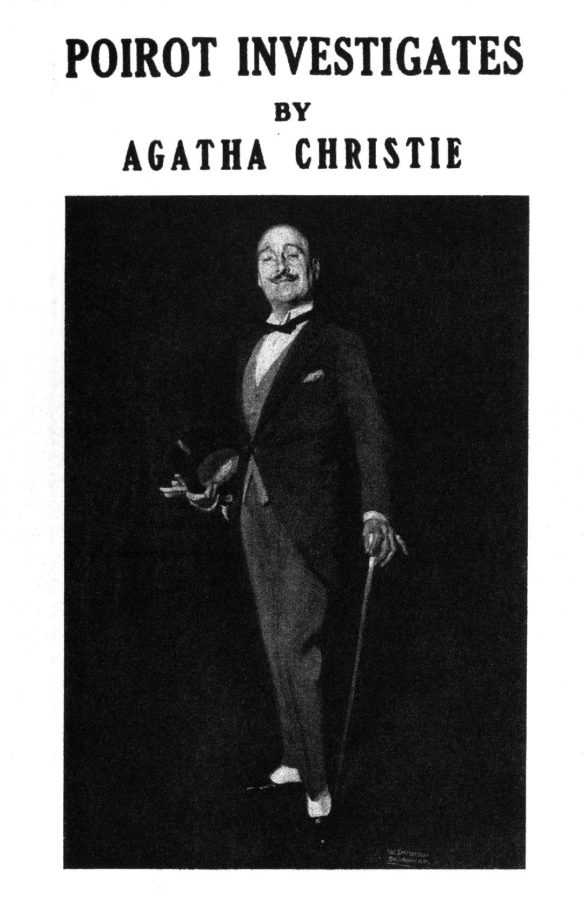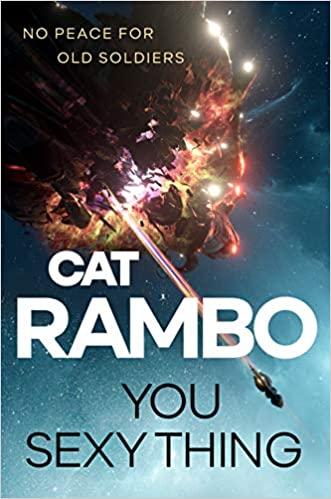(1) 2025 HUGO VOTING BEGINS. Seattle 2025 opened Hugo Awards voting today. All ballots must be received by July 23 at 11:59 p.m. PDT.
Voting by surface mail is also an option. Download a printable ballot. Print the ballot and follow the included instructions.
(2) HUGO VOTER PACKET. You can find out “What’s In The 2025 Hugo Voter Packet?” in File 770’s compilation of the HVP category indexes.
(3) NOTES FROM BELFAST. “Eastercon Reconnect” by SJ Groenewegen is a fine conreport.
… Next up was The Doctor Will See You Now, with Esther MacCallum-Stewart, Brian M. Milton, Fiona Moore, Nicholas Whyte and Catherine Sharp (moderator). The description read, ‘We’ve seen dramatic events in the Whoniverse in the last year, both in-canon and in production, from bi-generation and new companions to the return of Russel T. Davies and the first Doctor Who Christmas Specials since 2017. Our Whovian panel will discuss the highs and lows of the new era of New Who, the relationship it has to previous canons, Ncuti Gatwa’s playing of the Doctor so far, and more.’ Catherine began the panel by asking each panellist whether they were doctors… and all answered in the affirmative. An entertaining and knowledgeable discussion followed….
(4) SEMIPROZINES. The Semiprozine Directory is still being maintained by Neil Clarke at Semiprozine.org.
(5) EARLY C.L. MOORE. “Deeper Cut: C. L. Moore Before The Pulps” is discussed by Bobby Derie at Deep Cuts in a Lovecraftian Vein. Here’s an excerpt from Moore’s 1934 letter to R.H. Barlow.
Ever since we were about nine a friend and I have been evolving a romantic island kingdom and populating it with a race which, inevitably, is a remnant of Atlanteans. We’ve a very detailed theology and mythology, maps all water-colored and scroll-bordered and everything, a ruling house whose geneology and family tree and so forth has been worked out in tbales and charts from the year minus—oh, just about everything that two imaginative girls could think of over the space of fifteen years. (Heavens, has it been that long?) We have songs and long sagas of heroes, and a literature full of tradition and legends, and we even made and colored a series of paper dolls to illustrate the different types and their costumes, and then there were wars and plans of battle, and we have the maps of all our favorite cities, and we’ve written a good deal of history. And that history is what I take seriously….
(6) RELIGION IN WORLDBUILDING. Last night the Chicago Public Library hosted a panel of sff writers to discuss “American Prophets: Making New Gods”. A recording can be viewed on YouTube.
Four contemporary fiction writers – N.K. Jemisin, Nnedi Okorafor, Nghi Vo and Matthew Kirby – talk about religion in their writing, the importance of considering socio-spiritual systems when world-building and how these influence the ways their characters move through the worlds they create.
(7) MORE ABOUT DAMIEN BRODERICK. Rich Horton has written a tribute – “Damien Broderick, April 22, 1944 – April 19, 2025” – for Black Gate.
…Damien Broderick was an outstanding science fiction writer – and, to my mind, a somewhat underappreciated one. He was a tireless advocate of Australian SF, in both his anthologies and his critical work. He was an intriguing and rather iconoclastic science writer, very interested in the far future and in very speculative scientific ideas, including paranormal powers….
(8) SIMPSONS IN THE WILD. Animation Magazine is there when “’The Simpsons’ Exclusive Episode ‘Yellow Planet’ Launches on Disney+”
Today, Disney+ announced that an all-new episode of The Simpsons is now streaming exclusively on the streaming service. The full-length episode, titled “Yellow Planet,” is the show’s latest exclusive episode to hit the streamer this season, joining previous installments “The Past and the Furious” and “O C’mon All Ye Faithful.”
In “Yellow Planet,” The Simpsons are reimagined as animals in a National Geographic-style nature mockumentary. Homer and Marge navigate the ocean as whales from different series, Bart hatches as an iguana struggling to survive, and Lisa leads her flock as a finch. Along the way, familiar Springfield faces appear in unexpected roles, shaping their journeys in the wild….
(9) EARLY CLI-FI. [Item by SF Concatenation’s Jonathan Cowie.] Changing Climates Radio 4 Extra. This short series looks at climate change through the prism of science fiction. (Meanwhile, always seek out good sources of climate change science. 😉 )

The meteorologist, John Hammond explores the way that science fiction has served as a barometer for our wonder, curiosity and sometimes anxiety about the environment. With expert insight from Sarah Dillon – Professor of Literature and the Public Humanities and Professor of Human Geography, Mike Hulme, we find out how writers imagined – sometimes very accurately – the changing world around them.
Today, we focus on the early decades of the 20th century, a period rich in technological optimism and environmental unease.
First, we hear E.M. Forster’s chillingly prescient ‘The Machine Stops’;
A world in which people can only communicate through a machine sounds like the internet today. But this story, written in 1909, takes us to a future where the machine has become an all-powerful God.
EM Forster’s story dramatised by Gregory Norminton and first broadcast in 2001.
You can access the episode here.
(10) TODAY’S BIRTHDAY.
[Written by Lis Carey.]
April 23, 1973 — Naomi Kritzer, 52.
By Lis Carey: Naomi Kritzer first came to my attention with the delightful short story, “Cat Pictures, Please,” about a bored, rogue, AI who identifies as a cat, enjoys cat pictures, and decides to help out those silly humans, whose lives it knows so much more about than they do. What does it want in return? More cat pictures, please!
What I didn’t know then was that this new-to-me writer had been publishing since 1999, with two trilogies, some standalone novels, and quite varied short fiction. Along the way, having grown up in Wisconsin and attended college in Minnesota, she found time to live in London and Nepal.
There were more stories of the rogue Cat AI, committed in its own way to making the world a better place for good people who like cats. These include two novels. Catfishing on CatNet is about a teenage girl, Steph, who, with her mother, is constantly moving to escape her dangerous stalker father. She has a flipphone, no smartphone, is not allowed to make friends, and has no outlet except her online friends, in the friendly atmosphere of CatNet, run by the wise, kind, and completely anonymous CheshireCat. On CatNet, Steph is “Brown Bat,” and her friends, the members of her “clowder,” have similarly anonymous names. They all have fun and companionship, and with CheshireCat’s very intelligent but inexperienced in the real world (CheshireCat has only been active for five years, and is still learning about humans), pull off a prank that winds up attracting unwanted attention to Steph, her mom, and the other kids.
Chaos on CatNet has Steph and her mother settled in Minneapolis, Steph enrolled in a high school she can expect to graduate from. She’s also making real-world friends in addition to her online clowder. One of those friends, Nell, has her own complicated family history, and a very different kind of online community, which Steph starts to explore with her. CheshireCat is also getting messages from what he believes is another AI like himself, but he doesn’t trust the AI’s approach. Of course things get complicated. Another enjoyable, satisfying book.
But Naomi has other fiction that’s very different. A short story about a “Little Free Library” where one user, instead of leaving books in exchange for books, leaves little bits of artwork, and notes, and gradually, we find out who this strange visitor is, and what’s going on in their world.
“The Year Without Sunshine,” a novelette, is another very different kind of story. The world has undergone a series of smaller disasters, followed by a catastrophe that leaves clouds thick enough to block all sunshine. We follow one community struggling to make things work with a few days of electricity a week, intermittent delivery of life-critical medications by (apparently) federal authorities, and other such intermittent and not necessarily reliable outside support. When the internet goes down, Alexis and a neighbor, Tanesha, set up a booth, “WhatsUp,” to help keep communication going among neighbors who previously relied on WhatsApp. Then someone suggests it might be good to go door to door, and find out both what people need, and what they might have that they don’t need anymore—and a bigger project, and network, starts to form.
On her list to be is Liberty’s Daughter. Beck Garrison lives on a seastead, built out of constructed platforms and old cruise ships, to be a libertarian paradise. She’s grown up comfortable and privileged, but has started doing odd jobs for pocket money. Beck is hired by a woman from the other side of the waterline, to find her missing sister. She starts to learn things she never suspected, about the seastead, her father, herself, and the world. Some people don’t want her to say anything, or ask any more questions. This is a young adult novel, with a bright, good teenager learning to grow up in a hurry and make some big decisions.
Naomi Kritzer is a really interesting writer, who doesn’t do the same thing all the time, and somehow manages to be both realistic and positive about people. Truly a delight to read.

(11) NAOMI KRITZER Q&A. [Item by Cat Eldridge.] Naomi Kritzer’s CatNet at this point consists of “Cat Pictures Please” which won a Hugo at MidAmeriCon II, Chaos on CatNet and Catfishing on CatNet. As one who likes this series enough that I had her personally autograph the Cat Pictures Please and Other Stories collection, I wanted to know the origin of CatNet, so I asked. Well, I also gifted her with a birthday chocolate treat, sea salt dark chocolate truffles.
Here’s her answers:
Naomi: The original short story was basically the collision of two things:
1. The line, “the Internet loves cat pictures,” which made me imagine a central internet-based intelligence that wanted pictures of cats.
2. Getting myself a smartphone for the first time (I was a late adopter), and discovering some of its quirks, and coming up with anthropomorphic explanations for things like bad directions.
I mean, the Internet clearly does love cat pictures — although “the Internet” is “the billions of people who use the Internet,” not a secret sentient AI, though!
Cat: I went on to ask her how CatNet came to be…
Naomi: Do you mean in the story, how it got created? I was very vague about it in the short story but sort of heavily implied it was the result of something someone did at Google. In the novel CatNet was an experimental project from a company that was again, heavily implied to be Google.
Way, way cool in my opinion.
While putting this Birthday together, I noticed that she had two other series from when she was starting out as a writer, so I asked her to talk about them. Both are available on Kindle.
Cat: Let’s talk about your first series, Eliana’s Song.
Naomi: Eliana’s Song is my first novel, split into two pieces. I rewrote it really heavily multiple times, and each time I tried to make it shorter and it got longer. When Bantam bought it, they suggested that I split it into two books and expand each, which is what I did.
The book actually started out as a short story I wrote while in college. It garnered a number of rejections that said something like, “this isn’t bad, but it kind of reads like chapters 1 and 36 of a novel.” I eventually decided to write the novel, and struggled for a while before realizing I could not literally use the short story as Chapter 1, I had to start over writing from scratch.
Cat: And your second series, Dead Rivers.
Naomi: Sometime around 2010 I picked up the Scott Westerfield Uglies series and really loved it. Uglies in particular followed a plotline that I really loved, in which someone is sent to infiltrate the enemy side, only to realize once she’s there that these are her people, far more than her bosses are. But she came among them under false pretenses, and she’d have to come clean! And she almost comes clean,
doesn’t, of course is discovered and cast out, and and then has to spend the next book (maybe the next two) demonstrating her worthiness to be allowed to come back. I read this series and thought, “dang, I love this plot — I loved this plot as a kid, and reading it now is like re-visiting an amusement park ride you loved when you were 10 and finding out that even when you know where all the turns and drops are, it’s still super fun.” Like two days after that I suddenly remembered that I had literally written that plotline. It’s the plotline of the Dead Rivers trilogy. I really really love this plot, it turns out! So much that I’ve written it!
I’m not sure how well it’s aged. We were not doing trigger warnings on books yet when it came out, and the fact that the book has an explicit and fairly vivid rape scene took a lot of readers by surprise. It’s also a story that’s very much about whether someone can start out a bad guy and work their way to redemption.
Cat: Now unto your short stories. I obviously believe everyone should read “Cat Pictures Please” and Little Free Library”, both of which I enjoyed immensely. So what of your short story writing do you think is essential for readers to start with?
Naomi: That is a good question but one I find very hard to answer about my own work! It’s a “can’t see the forest because of all the trees” problem, I think.
“So Much Cooking” would probably be at the top, though (with the explanatory note that I always attach these days — I wrote this in 2015.) And then probably “Scrap Dragon” and “The Thing About Ghost Stories.”
To date, she has two short story collections, Gift of the Winter King and Other Stories which is only available as an epub, and of course Cat Pictures Please and Other Stories which is also available in trade paper edition.
(12) COMICS SECTION.
- Dinosaur Comics plans an alternate version of space travel.
- Eek! compares villains’ brands.
- The Argyle Sweater envisions a medical Dr. Seuss. (Don’t miss the poster on the wall!)
- WaynoVision recalls an artist’s school days.
(13) QUEEN’S OWN. A royal gift from the Boer War: “’It’s got a bit of a whiff’: Chocolate bar made in 1900 is on sale” reports BBC.

…The Queen commissioned manufacturers J S Fry & Sons, Cadbury Brothers Limited, and Rowntree and Company Limited to produce the special tins in 1899, Auctioneum said.
The tins bear the words “I wish you a happy new year”.
By the end of 1900, more than 120,000 tins had been distributed to soldiers….
Mr Stowe said while most of the chocolate bars were eaten straight away, some were sent home to loved ones or to hospitals for wounded soldiers.
“It is incredibly rare,” Mr Stowe said. “If you think over 125 years what that tin has been through – there’s been several world wars, it’s probably travelled back and forth over the Atlantic a couple of times.”
He said the chocolate bar, which is valued between £250 and £400, appealed to bidders who “might want an important piece of social history” or just a “talking point at a dinner party”.
(14) HIRING OBSTACLES. [Item by Mike Kennedy.] My brother Jim, who brought this to my attention and is a late boomer himself, commented that the “Original poster is too young to have any idea what it was like before fandom became mainstream.” “Entitled coworker rejects job candidate because she’s a fan of Stark Trek: ‘She made the mistake of mentioning her hobbies during [the] interview’” at Cheezburger.com.
Keep scrolling below for this tale of an unfortunately biased manager who thought a candidate was weird and unfit simply because she was a Star Trek fan.
(15) CAT FURNITURE. [Item by Daniel Dern.] The credential credenza at Viral News Flare.
(16) WHY DIDN’T ANTIMATTER DESTROY THE UNIVERSE? [Item by SF Concatenation’s Jonathan Cowie.] When the Universe began you might have thought that matter and anti-matter would be produced in equal quantities resulting in a bigger BANG but with no physical matter left for galaxies, stars, you, me and pints of real ale at the con bar. However Matt O’Dowd over at PBS Space Time suggests we now have an answer…
At one-one-thousandth of a second after the Big Bang, the great annihilation event should have wiped out all matter, leaving a universe of only radiation. Why still don’t know why any matter survived. Well, a new finding from the LHC brings us one step closer to understanding why there’s something rather than nothing.
(17) VIDEO OF THE DAY. [Item by Danny Sichel.] Steve Shives’s Starfleet Guidance Counselor is amazing. Actually, so is everything in his “Starfleet Jobs” series: “Starfleet Historian”, “Starfleet Chaplain”, “Starfleet Lawyer”…
Trying to educate children under the constant threat of violent death presents certain challenges.
[Thanks to John King Tarpinian, Chris Barkley, Cat Eldridge, Lis Carey, SF Concatenation’s Jonathan Cowie, Mark Roth-Whitworth, Steven French, Kathy Sullivan, Teddy Harvia, Mike Kennedy, and Andrew Porter for some of these stories. Title credit belongs to File 770 contributing editor of the day Jayn.]






























